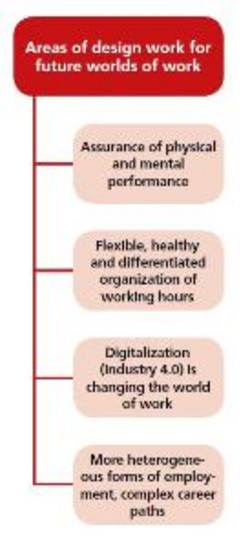KANBrief 3/15

Discussions with experts and managers and analyses of companies show the practical benefits of ergonomics standardization to be somewhat limited. This is a sobering fact and one that has led DIN's Ergonomics standards committee (NAErg) to develop a conscious strategic process with the following essential objective: that ergonomics standards should provide much greater assistance for designing the working environment than they have in the past.
In a workshop on "standardization and ergonomics" held by KAN and the ifaa (Institute for Applied Occupational Ergonomics and Industrial Engineering) in June 2014, ergonomics experts from a number of German companies discussed the relevance of ergonomics standards to industry. The significance of the standards can be summarized as follows:
Formal requirements for the standardization of ergonomics
The DIN Ergonomics standards committee (NAErg) has decided to launch a strategic process in order to address the opportunities and risks facing the standardization of ergonomics in Germany in the future. At the beginning of the strategic process, members of several NAErg committees and external experts from a number of companies discussed the requirements to be met by modern ergonomics standards, i.e.
Long standards with a short requirements section and long informative annexes could for example be divided into a standard and a technical report or broken down into several parts.
The standards navigator
Owing to the breadth of their topics (product and process ergonomics, physical and mental stresses, etc.) and the depth of detail in which the individual topics are addressed, many users find ergonomics standards impenetrable in practice. The users are unable to find the bodies of regulations they need – if indeed they make any effort to seek them.
The workshop produced a strategic vision for the launch of the NAErg strategic process in the form of a standards navigator. The standards navigator is intended to become a system that is to make the complete body of ergonomic standards comprehensible and its structure readily accessible. A range of filters for selection enable the user to find the standard relevant to the subject quickly. Classifications of the standards and search filters based upon the TOP approach (TOP (technology – organization – personal) approach: all three levels are covered, i.e. technical, organizational and personal aspects of work, process and product design) or the steps in the product-creation process for example are conceivable.
The cost-effectiveness of an ergonomic measure is repeatedly raised during corporate decision-making processes. Besides making relevant ergonomics standards easier to identify, it would also be of practical benefit for suitable standards to describe methods for assessing the business benefits of ergonomics.
The standardization of ergonomics must not grind to a halt
The design of new working environments is acquiring considerable importance. Ergonomics standards are required that describe the latest findings in the area of human factors. According to the workshop participants, this particularly concerns the following areas:
Some companies and institutions still fail to consider ergonomic principles systematically and universally. The pressing challenge for ergonomics standardization is therefore to increase awareness among the various target groups in companies (managers, experts) for the relevance and benefits of ergonomics.
Professor Dr Sascha Stowasser
Chair of the DIN Ergonomics Standards Committee (NAErg)